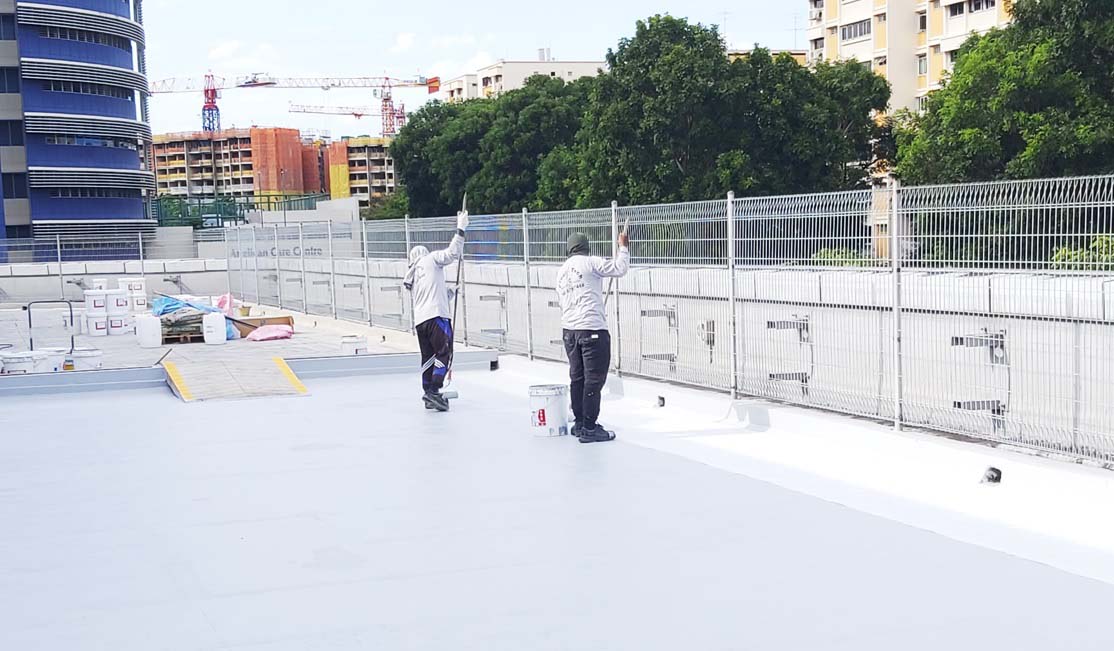In the world of roofing, one crucial aspect often overlooked is the role of waterproofing membranes. These unassuming layers play a vital role in protecting buildings from the elements, ensuring durability, and extending the lifespan of roofs. In this article, we’ll explore the intricate technology behind waterproofing membranes, shedding light on their types, functionality, and importance in roof repair.
Understanding Waterproofing Membranes
Waterproofing membranes are specialized layers designed to prevent water infiltration into buildings. They come in various types, each with its unique characteristics and applications. Common types include Thermoplastic Olefin (TPO), Ethylene Propylene Diene Monomer (EPDM), Polyvinyl Chloride (PVC), and Bitumen membranes. While TPO and PVC offer thermoplastic properties ideal for flexibility and ease of installation, EPDM boasts exceptional durability, and bitumen membranes provide robust waterproofing for various roof types.
The Science Behind Waterproofing
At the core of waterproofing membranes lies a blend of materials engineered to resist water penetration. Whether it’s the synthetic polymers of TPO and PVC or the rubber-like consistency of EPDM, these membranes create a barrier against moisture. Factors influencing their performance include material composition, installation techniques, and environmental conditions. Proper installation and maintenance are crucial to maximizing their effectiveness and longevity.
Benefits of Modern Waterproofing Technology
Modern waterproofing technology offers numerous benefits beyond mere water resistance. These membranes enhance durability, prolonging the lifespan of roofs and reducing the need for frequent repairs. Certain membranes also possess reflective properties, improving energy efficiency by reducing heat absorption. Moreover, advancements in sustainable practices have led to recyclable materials and green roof options, aligning with environmental goals.
Key Considerations in Selecting Waterproofing Membranes
Selecting the right waterproofing membrane involves considering several factors. Climate and weather conditions, roof design, budget constraints, and maintenance requirements all play a crucial role. Understanding these factors helps in choosing the most suitable membrane for each specific application, ensuring optimal performance and longevity.
Installation Process and Best Practices
Proper installation is paramount to the effectiveness of waterproofing membranes. It begins with thorough preparation of the roof surface, including cleaning and repairs as needed. Various application methods exist, including fully adhered, mechanically fastened, and loose-laid systems, each suited to different roof types. Quality control measures throughout the installation process ensure a watertight seal and optimal performance.
Future Trends and Innovations
The future of roof repair technology is marked by ongoing advancements in waterproofing membranes. Innovations focus on enhancing durability, integrating with smart building systems, and promoting sustainable practices. These trends reflect a commitment to improving performance, efficiency, and environmental responsibility in roof repair.
Takeaway
Waterproofing membranes are the unsung heroes of roof repair, safeguarding buildings against water damage and extending their lifespan. Understanding the technology behind these membranes, selecting the right type for each application, and ensuring proper installation are essential steps in maintaining a watertight roof. As technology continues to evolve, so too will the effectiveness and sustainability of waterproofing solutions.




